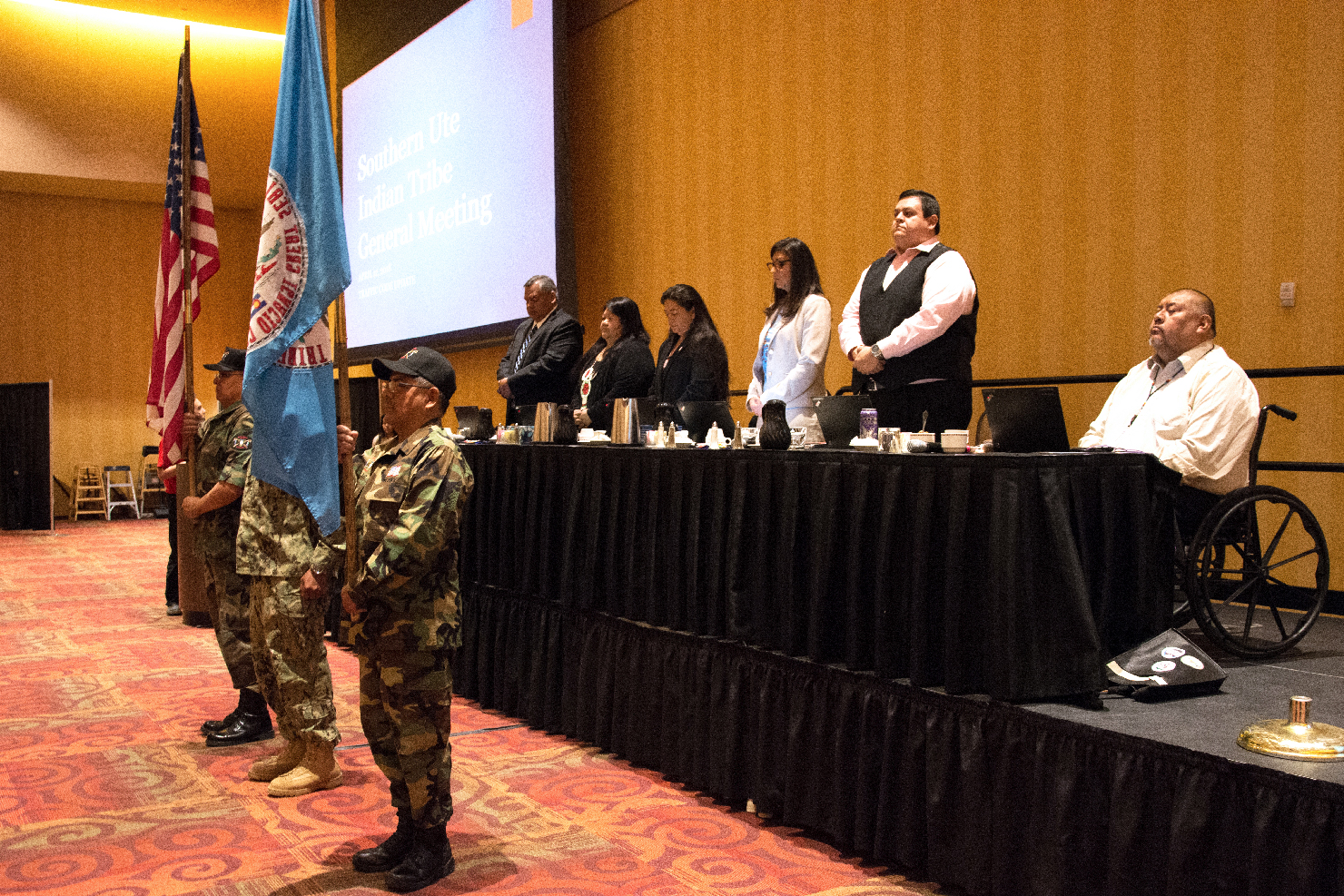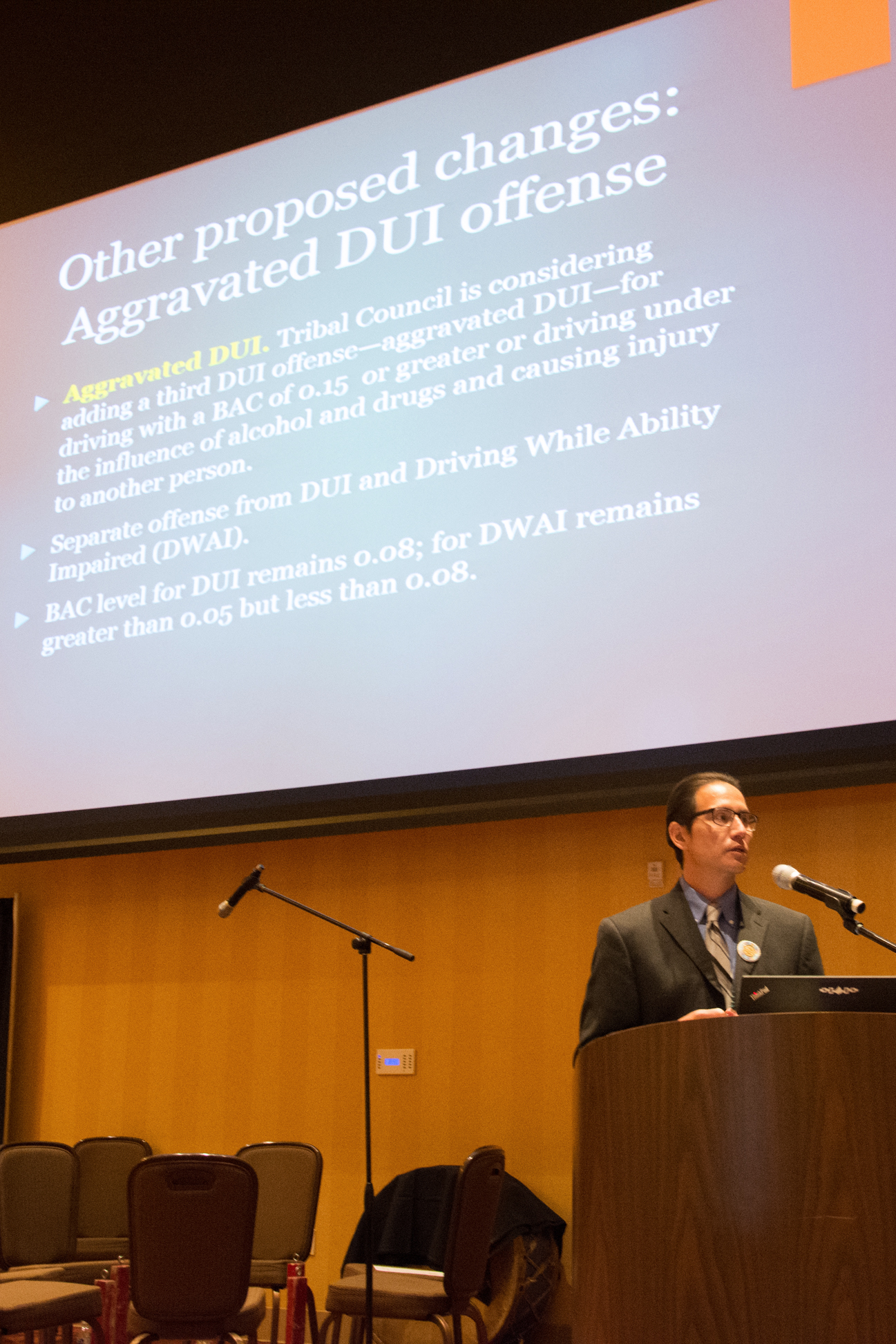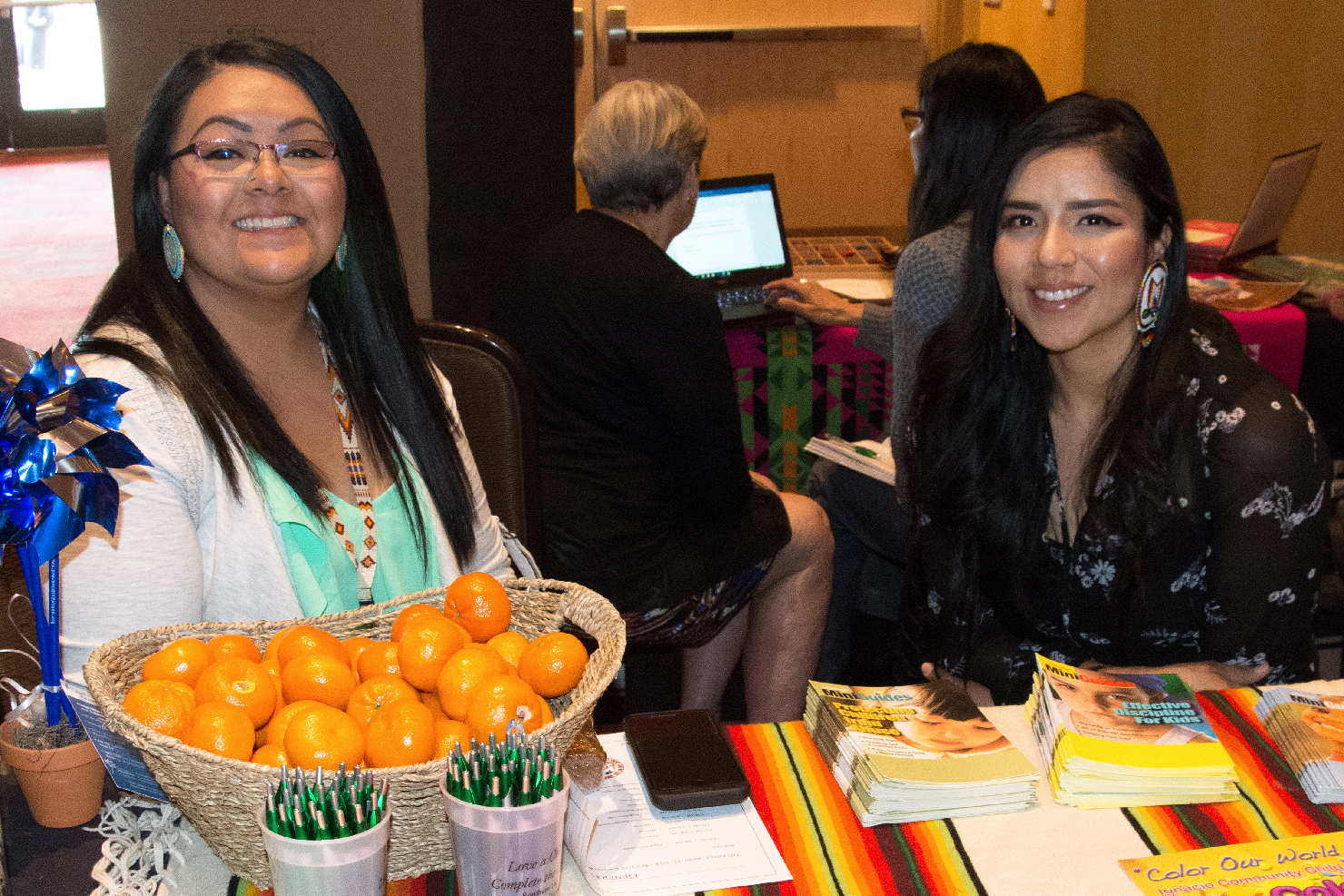“The Tribal Council is very busy every day to ensure the betterment of the Tribe” Southern Ute Chairman Christine Sage said at the beginning of the General Meeting. “I have a vision; this vision is communication. This is communicating with Tribal Council, the tribal administration, all tribal departments, the tribal members and the community,” Chairman Sage said during her welcome remarks. “I want to thank you for your attendance both in person and on the web, I hope this general meeting answers your questions.”
This year the Southern Ute Indian Tribe hosted the bi-annual General Meeting at the Sky Ute Casino & Event Center on Thursday, April 12. The meeting informed the tribal membership of the performances from the previous year and provided an outlook for the future year. The meeting covered the performances and revisions of various tribal programs and businesses. The General Meeting was available for streaming for those unable to attend via Web-Ex, which is a company that provides on-demand video conferencing applications.
The General Meeting began with the Southern Ute and American flags being brought into the event center by the Southern Ute Veterans Association, while the Yellow Jacket drum group sang flag and victory songs. This was then followed by an invocation by Southern Ute tribal elder, Raymond Frost.
TRAFFIC CODE
Moving into the discussion of the newly proposed Traffic Code, Southern Ute Tribal Attorney James Washinawatok addressed the room before his presentation about the background, amendments and the applicability of the code on tribal lands. This traffic code is a near final draft that is currently being revised; it is not yet in effect. To date, there have only been five known amendments to the traffic code, the last amendment happened in 2004 when the blood alcohol content (BAC) for a DUI was lowered from 0.10 to 0.08 which made it consistent with the Intergovernmental Agreement and federal standards. The proposed changes for this traffic code include: The Tribe will issue civil traffic citations not only to Indians, but also to non-Indians where the Tribe has civil jurisdiction (i.e., trust land and roads bounded on both sides by trust lands).
“Once the Tribal Council adopts [this] version of the traffic code then the traffic code would need to be submitted to the Bureau of Indian Affairs (BIA) for review and approval and then to the State of Colorado to make sure that the changes…are consistent with the intergovernmental agreement.” Washinawatok announced that by the end of May, the Committee wants to meet with Tribal Council to present the final version of the Traffic Code.
CEDAR POINT
“We [the Growth Fund] were asked in 2013 to help with ideas about housing for tribal members on the reservation.” Southern Ute Operating Director of Non-Energy Patrick Vaughn said about the Growth Fund’s part in helping the Cedar Point Housing Initiative (CPHI). The CPHI was formed by the Permanent Fund, Growth Fund and Tribal Council to provide housing to the Southern Ute membership.
In 2014, the Tribal Council requested for the Growth Fund to instigate and release a housing needs study which showed the demand for 30 homes and 15 rental dwellings. This study pushed the preliminary phasing plans forward for development to take place at Cedar Point. The CPHI townhomes will consist of 25 duplex and triplex style rental units that will have a common outdoor area and playground available for tenant use. Because of the approved project budget of $9.3 million, the units will feature granite countertops and Energy Star appliances including: gas kitchen stoves, dishwashers, electric washers and dryers. There will be a screening process for applicants to evaluate applications in an effort to benefit the tribal membership. The housing initiative has been ongoing since 2016, and the units are set to be available in the summer of 2018.
LAND CODE
“Title 29 is a land assignment code and it helps govern the use and occupancy of your assignments. Not your allotments,” said Germaine Ewing, Dept. of Natural Resources Division Head, at the beginning of the Land Assignment Code’s presentation. The original land code was approved in 1963, but in the early 1980’s the first attempts to revise the land code were taken. The presentation covered a history of the proposed revisions, what the code is and how it all came together.
The major differences between the old code and the updated Land Assignment Code, are that the names have changed. What was once known as Title 29 is now called “The Land Assignment Code”. The code has been formatted to be consistent with other tribal codes. There is now a definitions section (29-2-102). The code requires the submission of a homesite development plan as part of the application process (29-2-10 #3). The code expressly delegates authority to the Department of Natural Resources to enforce, implement and administer the code (29-1-103). A 45-day public notice, rather than a 30-day notice is now required for assignment applications unless relinquishing to an immediate family member. Homesites will be developed within two years following execution of the grant of assignment, unless otherwise agreed by writing with the Tribe (29-5-103). Tribal members are given the option to name a beneficiary for an agricultural assignment with no minimum age designation and a “contingent beneficiary” for the homesite (29-3-106). The next step for the Land Assignment Code is obtaining BIA approval once all revisions are complete.






